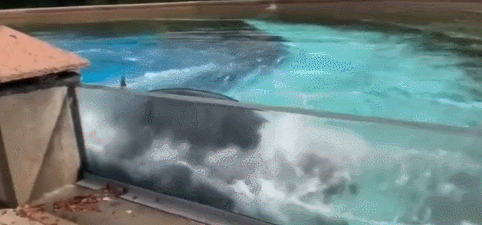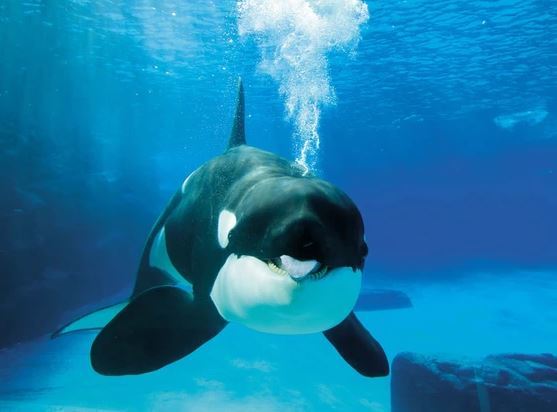A killer whale who lived alone in an aquarium for 44 years and hurt himself against a wall has died.
According to Canada’s CBC on the 11th (local time), the Ontario government officially announced the death of ‘Kiska’, the last killer whale caught in Canada.
Kiska’s exact cause of death is unknown. However, the marine park said in a statement that Kiska’s health had continued to deteriorate in recent weeks.
Kiska was born in Icelandic waters and was raised in a marine park for 44 years after being captured in 1979. She was mobilized for thousands of performances by 1992. She gave birth to five pups, but she unfortunately all passed away. All of her friends who lived with her died or were moved to other facilities. She eventually became the last killer whale left in the marine park since 2011.
 After her colleagues left, Kiska stabbed her head against the wall of the water tank and hurt herself. @walruswhisperer Twitter capture
After her colleagues left, Kiska stabbed her head against the wall of the water tank and hurt herself. @walruswhisperer Twitter captureKiska, who was left alone, was confined to a small aquarium and began to behave strangely, such as running around the same space over and over again, and banging her body and head against the walls of the aquarium several times.
 Kiska who lived in the marine park. @walruswhisperer Twitter capture
Kiska who lived in the marine park. @walruswhisperer Twitter capturePhil Demers, who worked at the marine park, released a video of Kiska’s actions online in 2021. he is
“I observed Kiska, the last survivor in the marine park, banging her head against a wall,” he said. “It is a dangerous act of self-mutilation. Kiska is in trouble,” she pleaded.
Associated Press, which first reported this, analyzed Kiska’s death, saying, “The environment in which Kiska had to live alone without colleagues or family in a marine park for the past 10 years was probably the main cause of this incident.”
“Killer whales have a habit of living in groups. In the wild, it has been studied that several generations form a group and live healthy for a long time.”
Whale conservation activist Rob Lott also claimed that Kiska was “the result of the stress of 40 years of raising wild-caught Icelandic killer whales in an artificial environment.”
WDC, a whale conservation organization, announced that there were at least 55 killer whales in aquariums, such as Kiska, worldwide as of January 9, 2023.
Source: Donga
Mark Jones is a world traveler and journalist for News Rebeat. With a curious mind and a love of adventure, Mark brings a unique perspective to the latest global events and provides in-depth and thought-provoking coverage of the world at large.